site search
online catalog
UNIQUE SILVER CAMEL-HEAD SPURS WITH U.S. SILVER COIN ROWELS!
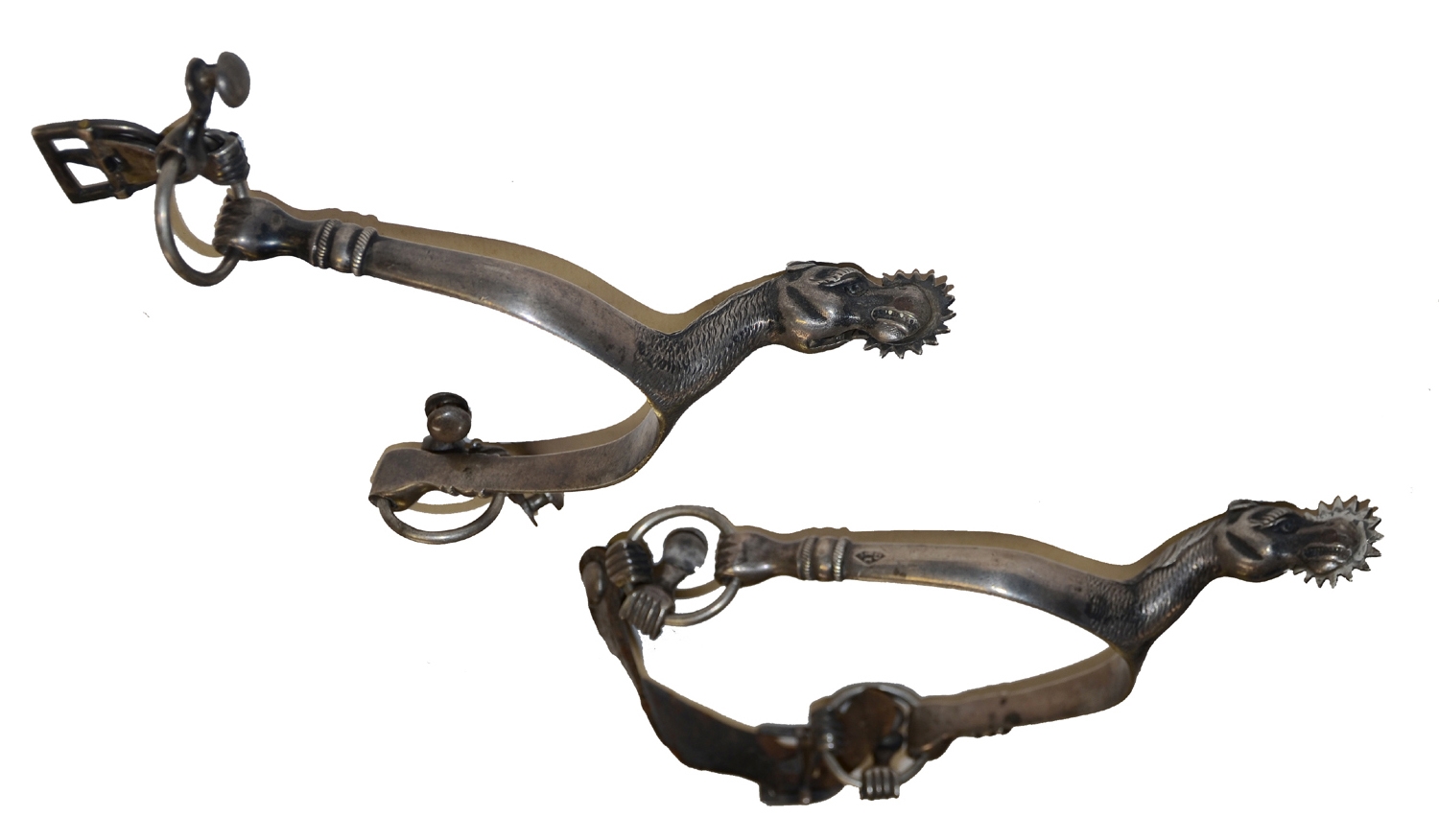
Hover to zoom

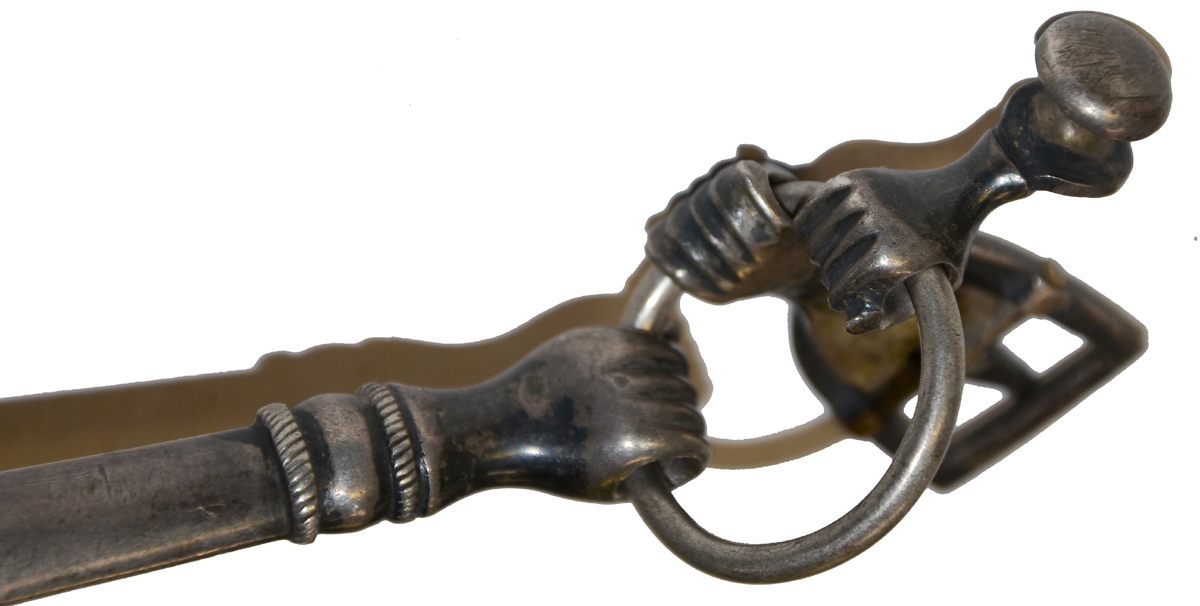
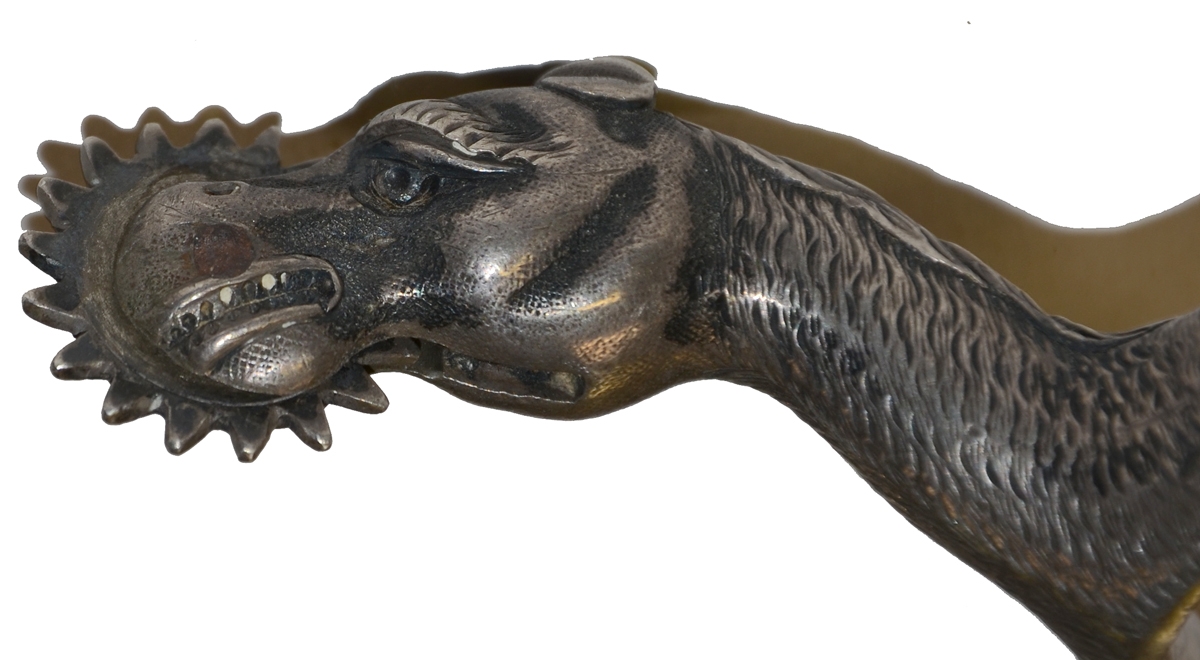
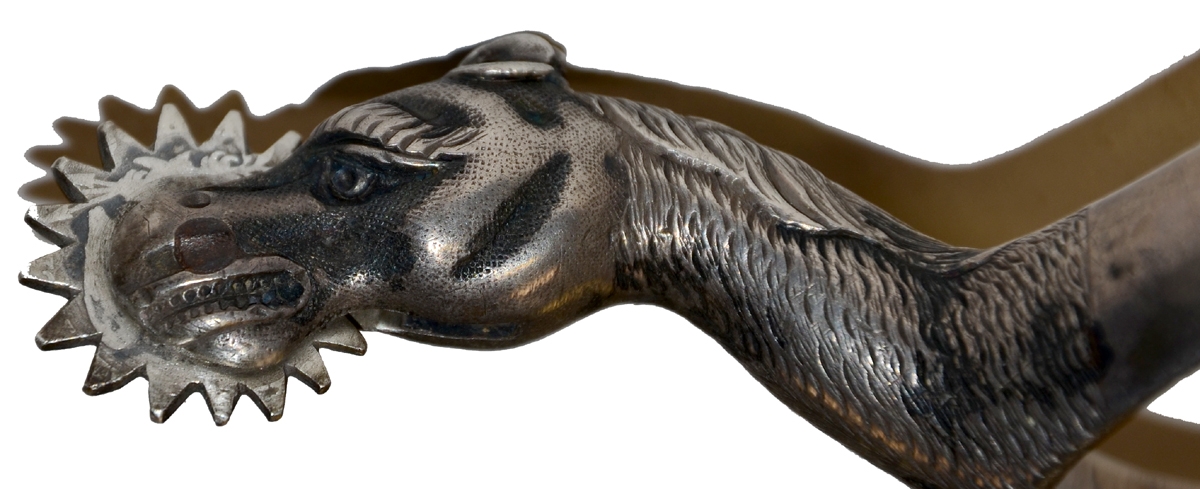
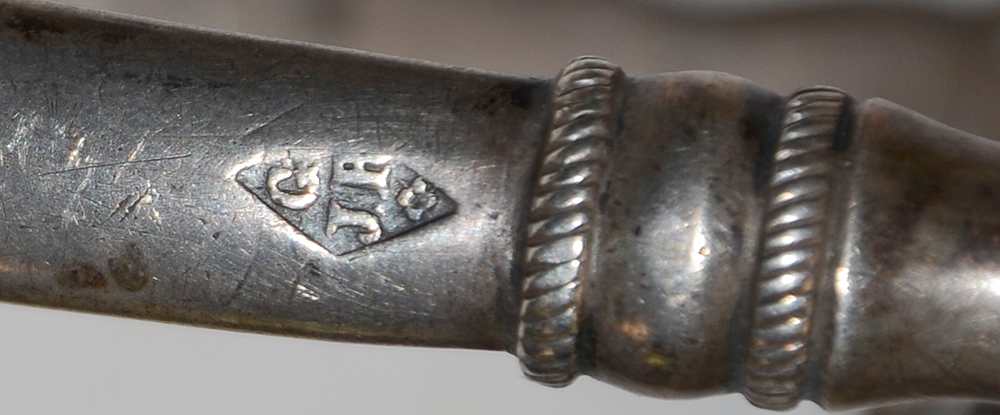
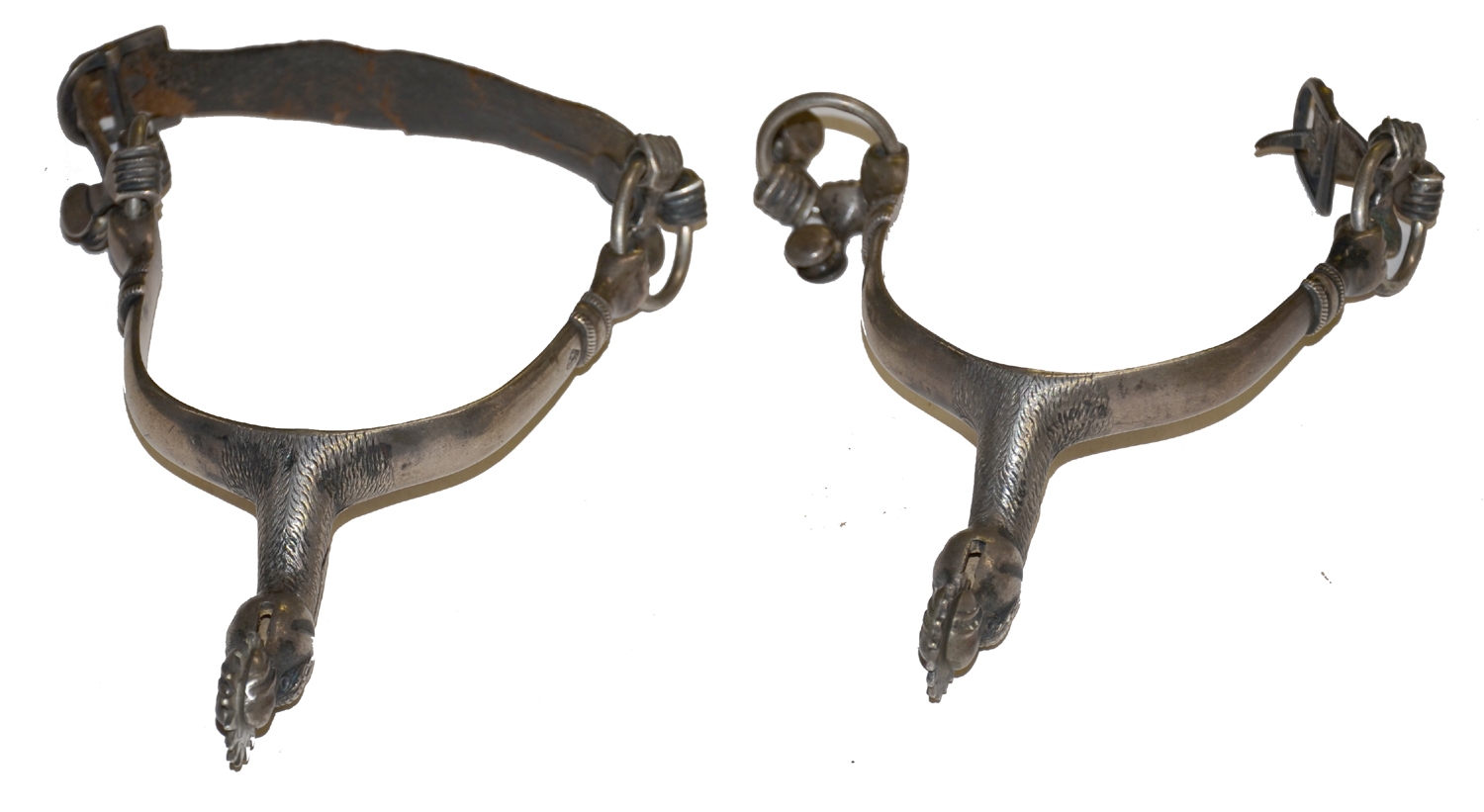
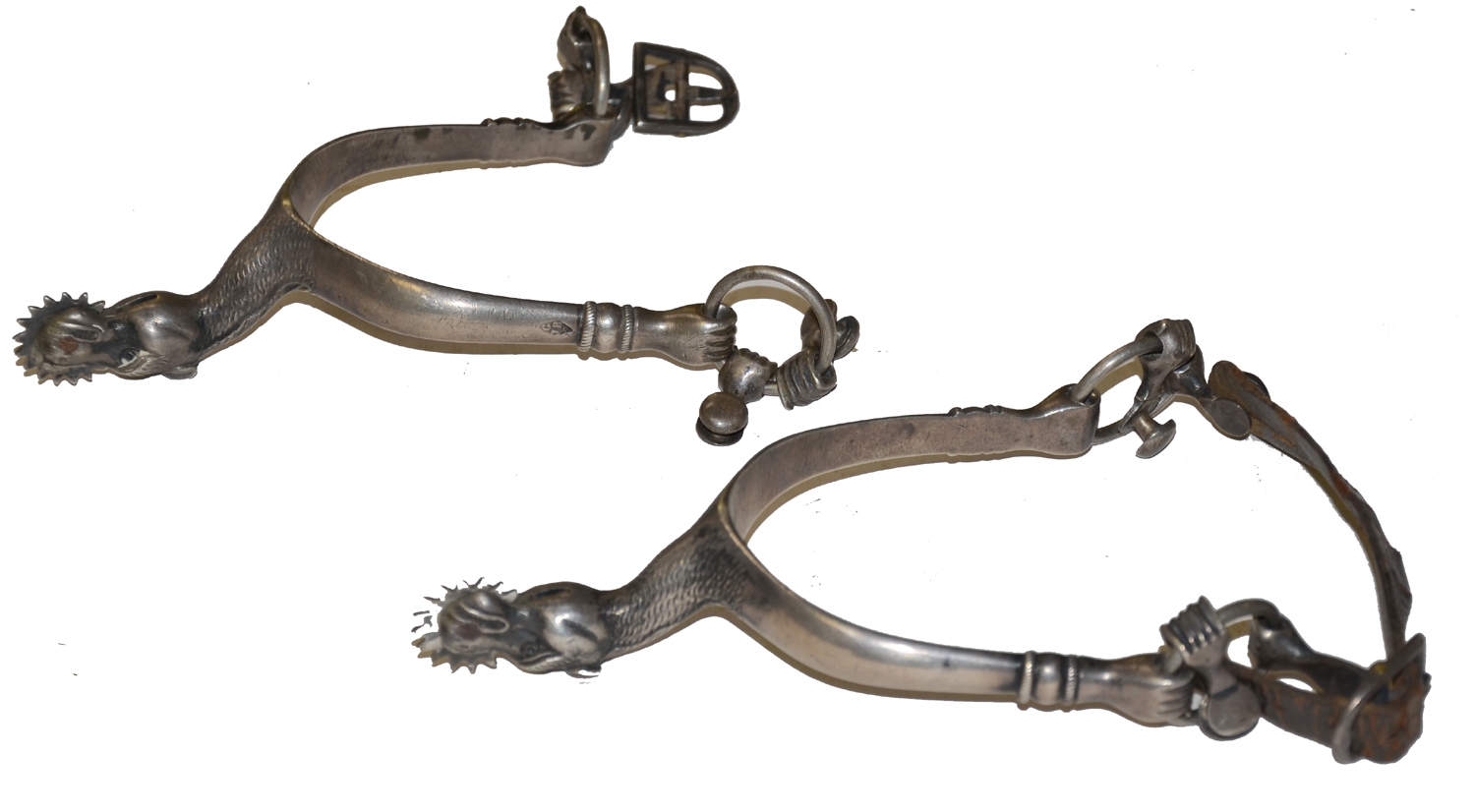
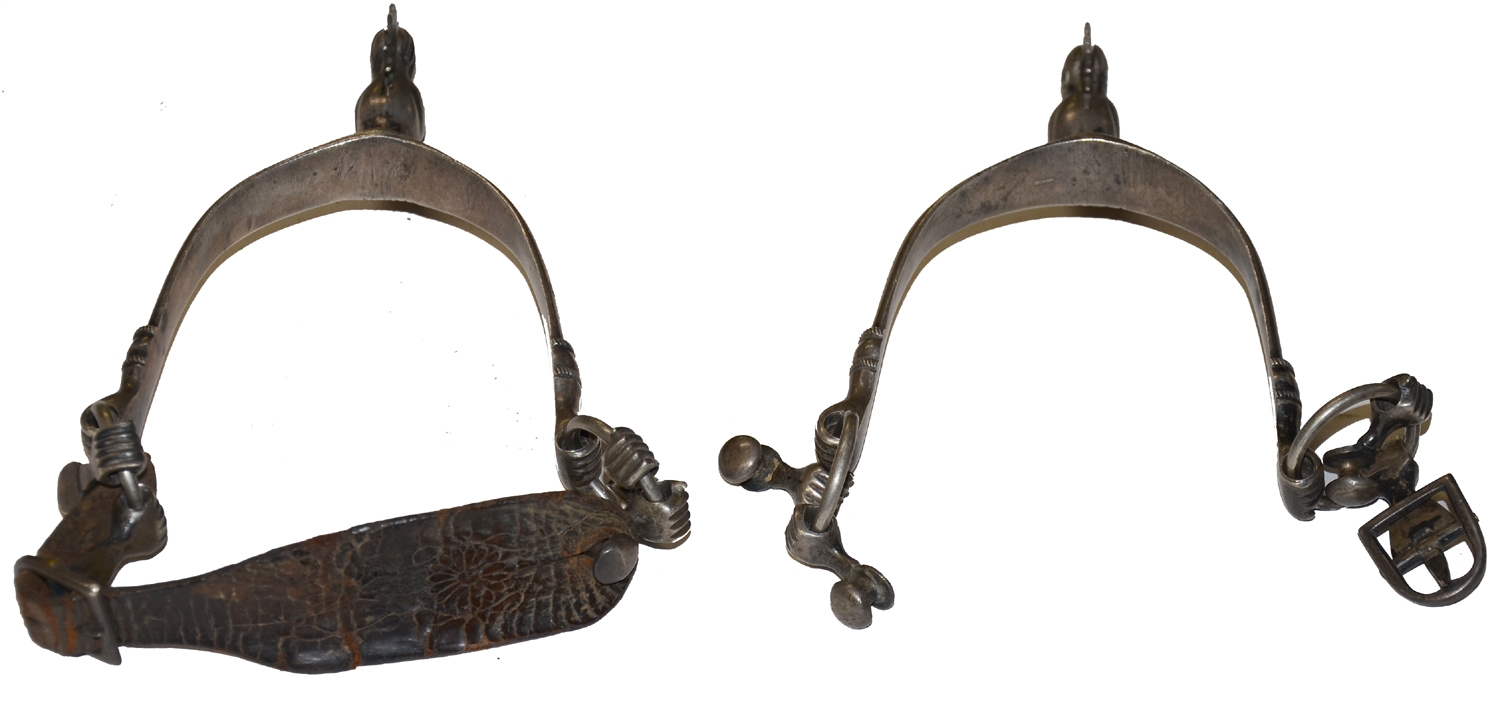
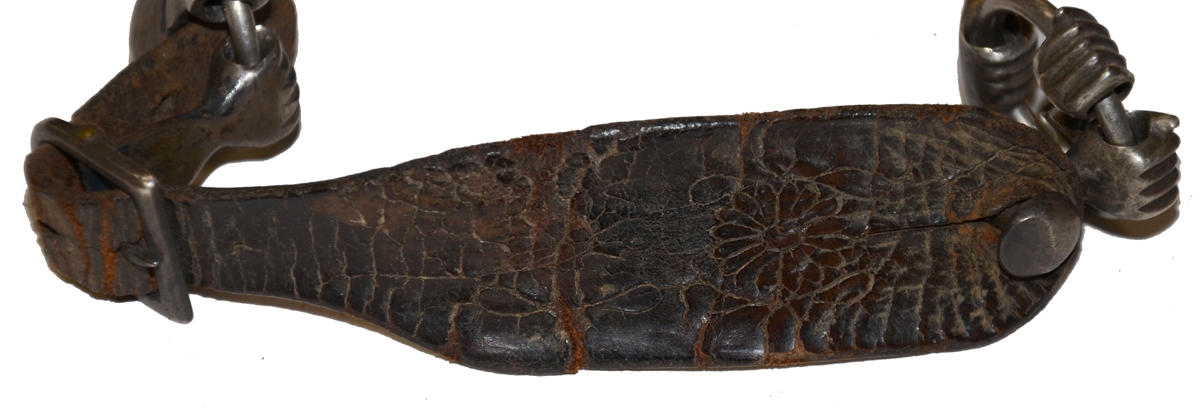
$2,000.00 SOLD
Quantity Available: None
Item Code: 801-567
These very unusual silver spurs bear a maker’s mark in a recessed diamond that looks French to us, but which we cannot identify precisely: “G” over “J” and “R” with a small quatrefoil looking somewhat like a flower petal at bottom. There is no doubt, however, that U.S. silver coins have been used for the rowels, likely seated Liberty dollars or half-dollars, cut around the edges to create points. Most of what seems to be an 1858 date is visible on the edge of one. The other seems to be dated 1857.
The necks of the spurs are worked to imitate short fur with a wave-like pattern imitated on a flat long collar or mane. The heads have flaring eyes and prominent brows, rounded ears placed high up, prominent jowls that narrow somewhat and then expand to a very rounded nose and lower jaw with the lips drawn back and teeth showing. Round side bars extend to cuff-like astragals from which hands emerge to clench rings suspending spur strap studs and buckles, themselves with bases shaped like hands, also clenching the rings. One leather strap remains, showing crackling to the surface, not much finish loss, and a visible impressed flower-petal stamp.
The dates on the coins fall right in the period when U.S. military fashion was dominated by the French, who in turn were influenced by their own colonial actions in the middle-east. Think of the craze for zouave uniforms that hit the U.S. at exactly this period. Of course, eastern influences had been evident in art and fashion for a long time, with a resurgence starting in the 1790s from Napoleon’s invasion of Egypt and our own encounters with the Barbary states in the early 1800s.
The coin rowels could well have been added to an earlier, Napoleonic, pair of spurs, but on a pair of spurs with an American connection ornamented by camel’s heads, the dates are suggestive: 1857 to 1860 was the high-point of U.S. Army experimentation with camels as pack animals in the southwest. U.S. navy officers made their acquaintance on purchasing voyages from 1855 to 1857 and army officers from various branches were involved with them on expeditions in Texas, New Mexico, and California to test their endurance and compare their performance against mules in arid climates. An 1859 army report found, “the superiority of the camel for military purposes in the badly-watered sections of the country seems to be well established.” At least one of these trips was made in 1860 under the orders of Robert E. Lee while in charge of the Department of Texas. The project faded with the onset of the Civil War, perhaps in part due to Jefferson Davis’s interest in it while Secretary of War, but it was very much in the public eye.
Whatever the immediate connection, this is an impressive set of spurs perfectly showing U.S. fascination with things eastern, in everything from zouave uniforms of the Civil War back to the curved dirks adopted by the U.S. Navy and Mameluke swords carried by US Marine officers in the early 1800s. [SR]
~~~~~~~~~~~~~~~~~~~~~~~~~~~~~~~~~~~
THIS ITEM, AS WITH ALL OTHER ITEMS AVAILABLE ON OUR WEB SITE,
MAY BE PURCHASED THROUGH OUR LAYAWAY PROGRAM.
FOR OUR POLICIES AND TERMS,
CLICK ON ‘CONTACT US’ AT THE TOP OF ANY PAGE ON THE SITE,
THEN ON ‘LAYAWAY POLICY’.
Inquire About UNIQUE SILVER CAMEL-HEAD SPURS WITH U.S. SILVER COIN ROWELS!
Most Popular
Historical Firearms Stolen From The National Civil War Museum In Harrisburg, Pa »
Theft From Gravesite Of Gen. John Reynolds »
Selection Of Unframed Prints By Don Troiani »
Fine Condition Brass Infantry Bugle Insignia »
Large English Bowie Knife With Sheath 1870’S – 1880’S »
Imported (Clauberg) Us Model 1860 Light Cavalry Officer's Saber »
featured item
ANS CS GENERAL LEWIS A. ARMISTEAD AND COL. JAMES H. HODGES, 14TH VIRGINIA – BOTH DIED AT GETTYSBURG, MORTALLY WOUNDED DURING PICKETT’S CHARGE!
This August 1862 dated, 3 ¼” x 4 ½” paper, handwritten in ink, features the signatures of Armistead and Hodges, as well as that of Maj. Gen. R. H. Anderson. On the reverse is a small portion of a letter dated, “Camp 14th Va Regt / August 5th… (2025-3326). Learn More »
site search
Upcoming Events
The shop is currently closed so that we may conduct our annual inventory. We are available by phone… Learn More »


